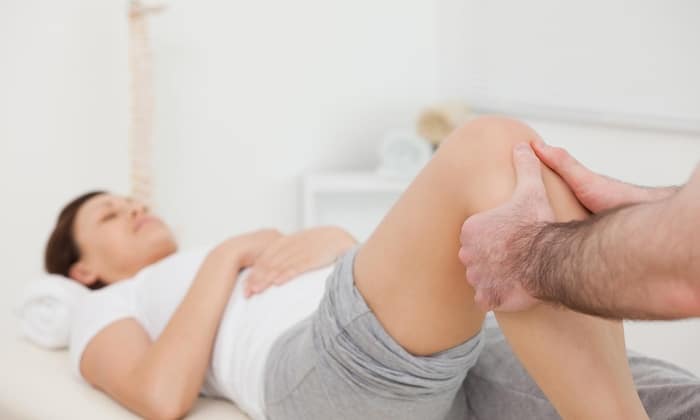
Thoughts for Rehabilitation
In the 11 previous Blogs, we have identified and supported the following statements:
- Poor movement can be referred to as inefficient movement: where local mechanical stress on muscles, ligaments and joints are increased; and where muscles are required to expend more energy causing earlier fatigue.
- These poor movement patterns expose biological tissue to increased relative risk of contact (poor loading of tissue causing pre-weakened structures) and non-contact injuries (poor loading of tissue causing premature failure of structures).
- Acknowledging the underlying principles that are involved in manual testing is an art and a precision necessary to identify these relative risks.
- The interpretation of the manual testing process enables the observer to create a relevant and safe detailed corrective exercise programme and treatment plan ensuring movement is optimised with regards to reducing pain, fatigue, discomfort, inadequate range.
- Functional Movement Screens (FMS) must be part of a composite screening protocol which would include static (posture, quiet standing, sitting) and dynamic (FMS, meaningful task) tests to understand when the body fails loading. See previous blogs.
Note: Poor movement can develop at anytime in our lives from in utero through to dying.
When things go wrong
The process of biological tissues prematurely ageing generally evolves in Phases (see below), by not getting the right rehabilitation plan or ignoring the signs and symptoms may well promote the problem to the next phase.
- Phase 1: Dysfunction: out of balance, lack of harmony, no capacity to complete task, challenging biological design beyond its design.
- Phase 2: Disorder: long term dysfunction, tissue physiology, inflammation, poor nutrient levels, poor lifestyle habits, lack of healing.
- Phase 3: Disease: long term disorders evolving to disease, or genetics, surgery, pharmaceuticals, etc.
Your first read may suggest the vast skill set needed for a Therapist to support MSK rehabilitation may appear impossible to gain. And you’d be right! In a single Therapist maybe, however in a multidiscipline professional team of growth mindset, top-down bottom-up thinkers you’d find the harmony for progression and superior management for the patient/client. I like to call these my Integrated Allied Health Professional.
Summary: When the human body ‘goes awry’ the answer to the problem is often multifactorial
Find your Team.
Interview your prospects you’d like to work with, see if they will discuss their failures. Did they evade the topic of failure? Then they are not the right person for an you – they are not an Integrated Allied Health Professional.
Evidence suggests you will always be the ‘problem’. Find your ‘James Dyson’, yes, I do mean the guy who invented the Dyson turbine products (vacuum cleaners, hand dryers etc). This gentleman is one of my inspirations as a Scientific Researcher and Inventor. Why? It took an astonishing 5127 prototypes, and the application for more than 4000 patents before Dyson believed the technology was ready to go into the vacuum cleaner. James Dyson failed (in his garage, self-funded!!) 5127 times! Each little failure brought him closer to the final product.
Each failure was reflected upon and actioned upon. “Creativity should be thought of as dialogue. Removing failure from innovation is like removing oxygen from fire. Failures feed the imagination. You cannot have one without the other.” (James Dyson).
Summary: Be in the mindset to embrace failure and learn from each one. Create a community of health professionals who can or will learn to. This alone could transform MSK Rehabilitation as a profession. (More to come on this at a later date)
Treatment
What we have been taught, and most often remains to be taught:
- 1 – 3 days (up to 72 Hours) – Leave alone, Limit Inflammation Damage By (P)RICE protocols – although they acknowledged that this is absolutely necessary, but still went on to promote RICE and NSAIDS!! Can work on “unrelated” areas and also use RI techniques so not asking “damaged” tissue to contract.
- 3 Days to 3 Weeks – At 3 days SAFE to work, starts to lay down new collagen. Encourage optimum Repair by beginning to “stress” tissues, Promote new blood into area, through superficial massage along natural fibre direction and to facilitate removal of waste products, plus heat and ice.
- 3 weeks onwards – Still sub-optimal for full exertion / movement, Monitor collagen lay down, help to ensure these lay down in correct way, watch out for joint instability / laxity, remedial exercise to muscles.
Those of you who have followed the previous 11 weeks of injury rehab blogs will know – I’m not about to give you the answers! There are no answers, there are considerations that should part of your Clinical Hypothetical Deductive Reasoning that identify what is needed for the individual.
Failures in ‘teaching’ MSK Rehab
- If 0-48 hours post injury the inflammation we experience is a really important part of tissue healing- a really vital part of tissue healing that we ideally don’t want to stop, then why would we be trying to stop the inflammation using NSAIDS and RICE? (David Butler, 2000). Is the inflammation really damage??? Or 0-48 hours the inflammation is healing? The evidence suggests healing. Can we recognise this terminology of limiting inflammatory damage as the first failure in MSK Rehab?
- Can we really ‘feel’ (palpate) the belly of the piriformis muscle? Impossible, unless the individual has had the gluteals removed – like in a dissection lab! So why is this consistently being taught at a direct correlation with hands-on therapies? Any statement that makes direct association to being able to palpate the belly of the piriformis muscle is failure number two – and remains to be taught in most hands-on training courses.
- If a muscle has been forced in to a lengthened physiological position (i.e. the points of attachment are further away from one-another at rest), would we prescribe the same rehab (treatment/exercise) to a muscle that has the opposite physiological position i.e. adaptive shortened? Before you answer, think about the following; one muscle needs to contract, the other muscle needs to lengthen. Both muscles needs to know it is safe to change length, and both need to have the capacity to make the change.
- Both muscles need the capacity to change before we can prescribe exercise – if they don’t have the right physiology for change the exercise prescribed may promote compensatory mechanisms to reach the desired outcome.
- Post adjusting the muscles capacity, Mindful exercises to create new brain maps (neuroplasticity) need to be considered.
Failures in Clinical Journals
- Should Authors of clinical journals be identifing AS/SW in their subjects before clinical papers are published? For example Lauersen et al., 2014 made the following statements “there are no benefits to stretching” which has propagated the Manual Therapy Industry at an extraordinary rate – receptors of the outcome align themselves subconsciously to cognitive consonnance, i.e. if they like the evidence they WILL shout about it. I would suggest they read the finer detail ;). Maybe the methodology of screening the 26,610 subjects for AS/SW would have removed a HUGE physiological independent confounding variable within this data set – Failure number three.
Successes in MSK Rehab: Length-Associated Changes
Adaptive Shortened (AS) (short):
- Weak, short & tight due to increase in catabolism after 3 days, reduced Range of Motion, and increase in Hydroxyproline (there are many more physiological changes!)
Stretch Weakened (SW) (lengthened):
- Weak, long and stiff due to extra sarcomeres forming within first 24 hours, post 5 days the sarcomeres reduce in length.
- Both these length-associated changes in muscle may feel ‘tight‘ to both you and your patient/client/athlete. This does not even consider the Neurodynamics of the individuals body, nor how Mental Health may contribute to muscles feeling tight.
- Both length-associated changes require the physiology to change capacity: AS needs length therefore stimulate GTO’s, SW needs contraction therefore stimulate spindles.
- Your Manual Screening will support you identifying the positional awareness of the joints allowing you to identify if the muscle is AS or SW. There are skills in Muscle Testing that may also support these findings, however, many of the schools of Muscle Testing miss the complex nature of the science underpinning muscle activation – therefore, explore with caution.
- No matter what your Profession, you and your Team have the skills to do all this. Evidence suggests good biomechanics and anatomy education is all you need to be successful at hands-on work.
Summary: Not often will a ‘tight’ muscle want to stretch: AS muscle needs to know it is safe to stretch before it stretches, and a SW muscle is already lengthened and needs to contract.
-
There are so many mechanisms involved in squatting, some of these mechanisms are fundamental to the human design, others blow off the cobwebs and allow us to keep moving safely and efficiently. Reducing squatting exposes the joints to premature aging; knees, hips, ankles, spine, and pelvis.
-
Thumb joint corrects foot pain! Seriously?
I know, crazy right? I must be mistaken? It has to be some kind of black magic? I'm pain-free because of some other factor? It must be psychosomatic?To be honest, I have heard it all now. What's important? My wrist is pain-free enabling me to get back to a normal life after 2 years of pain!



0 responses on "Make your MSK Rehabilitation Plan the best"